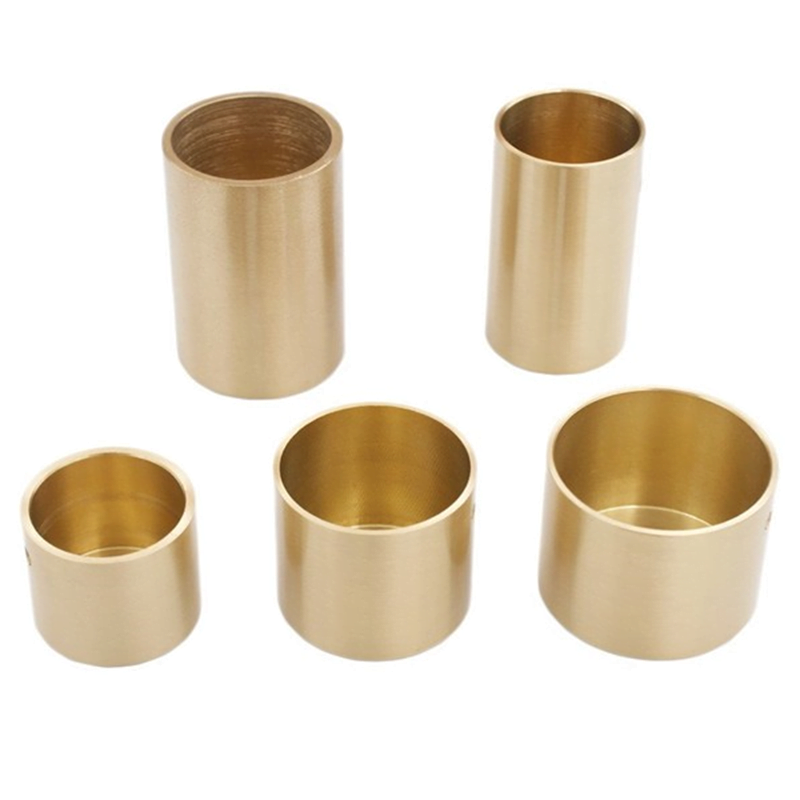
Введение
Алюминиевые бронзовые трубки становятся все более важными в промышленных теплообменниках из -за их превосходной теплопроводности, коррозионной стойкости и долговечности. В этом руководстве рассматриваются стратегии оптимизации для максимизации эффективности теплопередачи и эксплуатационных показателей.
Свойства и выбор материалов
Стандартные алюминиевые бронзовые оценки для пробирков теплообменника
| Оценка | Состав | Теплопроводность (Вт/м·К) | Ключевые приложения |
|---|---|---|---|
| C61300 | Cu-Al-Ni-Fe | 45-52 | Химическая обработка |
| C61400 | Cu-al-ni-fen | 42-48 | Морские теплообменники |
| C63000 | Cu-al-fu | 38-45 | Системы высокого давления |
| C63200 | Cu-al-fa-six-si | 40-46 | Коррозионная среда |
Сравнительные показатели эффективности
| Имущество | Алюминиевая бронза | Нержавеющая сталь | Медно-никелевый |
|---|---|---|---|
| Формование и изгиб | 40-52 Вт/м · к | 16-24 Вт/м · к | 30-45 Вт/м · к |
| Устойчивость к коррозии | Превосходно | Хороший | Очень хороший |
| Сопротивление загрязнения | Высокий | Умеренный | Умеренный |
| Фактор стоимости | 1,5-2,0x | 1,0x | 1,3-1,8X |
Стратегии оптимизации дизайна
1. Оптимизация геометрии трубки
| Параметр | Стандартный диапазон | Оптимизированный диапазон | Воздействие на эффективность |
|---|---|---|---|
| Толщина стенки | 0.9-1,2 мм | 0.7-1,0 мм | +5-8% |
| Внутренняя поверхность | RA 1.6-3.2 | RA 0,8-1,6 | +3-5% |
| Трубчатая шаг | 1.25-1.5d | 1.15-1.25d | +4-7% |
2. Оптимизация конфигурации потока
| Конфигурация | заявка | Повышение эффективности | Капля давления |
|---|---|---|---|
| Противоположность | Высокий Δt | Базовая ссылка | Умеренный |
| Усовершенствованный противоположность | Критическая служба | +10-15% | Высокий |
| Многопроход | Ограниченное пространство | +5-8% | Высокий |
| Перекрестный поток | Газовое охлаждение | +3-5% | Низкий |
Методы повышения производительности
1. Методы улучшения поверхности
| Метод | Описание | Повышение эффективности | Влияние на стоимость |
|---|---|---|---|
| Внутреннее канавка | Спиральные канавки | +15-20% | +30% |
| Внешние плавники | Интегральные плавники | +25-30% | +40% |
| Надувать | Поверхностная текстурирование | +10-15% | +20% |
| Микро-каналы | Внутренние каналы | +20-25% | +45% |
2. Оптимизация распределения потока
| высокая проводимость | Выполнение | Выгода | Рассмотрение |
|---|---|---|---|
| Входные лопасти | Директора потока | Даже распределение | Капля давления |
| Расстояние перегородки | Оптимизированные пробелы | Лучше смешивание | Обслуживание |
| Проходная договоренность | Несколько проходов | Более высокая скорость | Сложность |
| Дизайн заголовка | Поток экведитеров | Равномерный поток | Расходы |
Эксплуатационные параметры
1. Рекомендуемые условия работы
| Параметр | Нормальный диапазон | Максимальный диапазон | Оптимальный диапазон |
|---|---|---|---|
| Жидкая скорость | 1,0-2,5 м/с | 0.5-3,0 м/с | 1,5-2,0 м/с |
| Температура | 20-150 ° C. | -10-200 ° C. | 40-120 ° C. |
| Давление | До 20 бар | До 40 бар | 10-15 бар |
| Диапазон pH | 6,5-8,5 | 5.0-9.0 | 7.0-8.0 |
2. Параметры мониторинга производительности
| Параметр | Метод измерения | Частота | Порог действия |
|---|---|---|---|
| Коэффициент теплопередачи | Датчики температуры | Ежедневно | <85% дизайн |
| Капля давления | Давления давления | Почасовой | >120% дизайн |
| Скорость потока | Потоки измерителей | Непрерывный | <90% дизайн |
| Фактор загрязнения | Рассчитан | Еженедельно | >120% дизайн |
Сохранение обслуживания и эффективности
1. Графики очистки
| Тип обслуживания | Метод очистки | Частота | Воздействие на эффективность |
|---|---|---|---|
| Легкая долга | Химическая очистка | 6 месяцев | +5-10% |
| Средняя обязанность | Механическая очистка | 3 месяца | +10-15% |
| Тяжелый | Комбинированные методы | Ежемесячно | +15-20% |
2. Профилактическое обслуживание
| Активность | Частота | Цель | Влияние на эффективность |
|---|---|---|---|
| Осмотр | Ежемесячно | Раннее обнаружение | Поддерживает базовую линию |
| Тестирование | Ежеквартальный | Проверка производительности | +2-5% |
| Уборка | По мере необходимости | Снятие загрязнения | +5-15% |
| Замена | 5-10 лет | Надежность | Возвращается к дизайну |
Тематические исследования оптимизации эффективности
Тематическое исследование 1: Химическая обработка
- Приложение: процесс холодильника
- Оптимизация: усиленная поверхность трубки
- Результаты:
- 25% повышение эффективности
- 30% снижение затрат на энергию
- На 40% более длинные интервалы очистки
Тематическое исследование 2: Выработка электроэнергии
- Приложение: Steam Condenser
- Оптимизация: распределение потока
- Результаты:
- 15% повышение эффективности
- Снижение насосной мощности на 20%
- На 35% снижение обслуживания
Анализ затрат и выгод
1. Инвестиционные соображения
| Улучшение | Стоимость премии | Период окупаемости | Рентабельность |
|---|---|---|---|
| Основные трубки | База | База | База |
| Улучшенная поверхность | +30% | 1,5 года | 180% |
| Оптимизированный дизайн | +20% | 1,2 года | 200% |
| Комбинированные решения | +45% | 2,0 года | 160% |
2. Оперативные сбережения
| Категория | Потенциальная экономия | Стоимость реализации | Чистая выгода |
|---|---|---|---|
| Энергия | 15-25% | Середина | Высокий |
| Обслуживание | 20-30% | Низкий | Очень высоко |
| Замена | 30-40% | Высокий | Середина |
Резюме лучших практик
- Фаза дизайна
- Оптимизируйте геометрию трубки
- Выберите подходящую оценку
- Рассмотрим функции улучшения
- Планируйте техническое обслуживание
- Установка
- Правильная поддержка трубки
- Правильное выравнивание потока
- Контроль качества
- Тестирование производительности
- Операция
- Следите за ключевыми параметрами
- Поддерживать оптимальные условия
- Регулярный осмотр
- Профилактическое обслуживание
- Обслуживание
- Регулярная уборка
- Мониторинг производительности
- Оценка состояния
- Своевременная замена
Будущие тенденции
- Материальное развитие
- Продвинутые сплавы
- Поверхностная обработка
- Нано-коатинг
- Умные материалы
- Дизайн инновации
- 3D -печатные приложения
- Вычислительная оптимизация
- Гибридные системы
- Модульные конструкции
Вывод
Оптимизация алюминиевых бронзовых трубок в теплообменниках требует:
- Тщательный выбор материала
- Правильные соображения дизайна
- Регулярное обслуживание
- Мониторинг производительности
- Непрерывное улучшение
При правильном реализации эти стратегии могут привести к:
- 15-30% повышение эффективности
- Снижение затрат на техническое обслуживание на 20-40%
- 25-35% экономия энергии
- Расширенный срок службы
Инвестиции в оптимизацию обычно окупаются в течение 1-2 лет, обеспечивая долгосрочные операционные льготы и повышают надежность.
